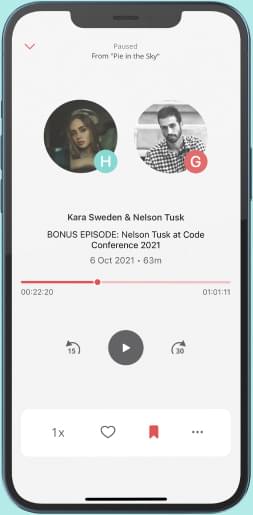
Complexity Is Your Unfair Advantage - with Olga Maslikhova (The J Curve)
We talk about complexity all the time — but few founders have weaponized it like these four did. In markets where infrastructure is fragmented, regulation changes by the month, and operational chaos is the norm, most founders either give up or try to export Silicon Valley playbooks that don't translate. Daniel Vogel, Caique Carvalho, Tiago Dalvi, and Piero Contezini did something different. They didn't build despite the complexity. They built because of it. Daniel turned Mexico's regulatory maze into Bitso's $2.2 billion moat — Latin America's first crypto unicorn. Caique orchestrated Brazil's fragmented DMV infrastructure into Gringo's $200 million exit to Corpay. Tiago called every investor to return their money, then pivoted Olist into a $10 billion GMV platform. And Piero turned Brazil's Byzantine tax system into Asaas's 37 revenue streams and a path to a U.S. listing. This isn't a recap episode. It's a strategic debrief. Every few months, I step back to look at the patterns — the decisions, frameworks, and inflection points that separate companies that scale from those that stall. This quarter, one theme cut through everything: in emerging markets, the very friction that makes these markets "too hard" is what makes them defensible once you figure them out. What I cover:The infrastructure decision — When to build from scratch vs. orchestrate what exists, and why control beats features in volatile markets.The contrarian bet that won Mexico — How Bitso ignored the entire crypto industry's narrative about replacing fiat and built the bridge instead.The tattoo marketplace that failed — What Caique learned about the difference between problems people tolerate and problems they'll pay to eliminate.The pivot that required courage — Why Tiago offered to return investor money, and what that decision revealed about founder clarity.Distribution as product design — Why Gringo built for WhatsApp first, and the three questions every founder should ask before building any feature.The four-layer playbook — How Asaas went from "help SMBs get paid" to 37 revenue streams by solving sequential, interconnected problems.The M&A playbook that just works — Olist's four-step integration strategy that turned acquisitions into product strategy, not just consolidation.Why 2,600 hours on taxes = $185M raised — The value of inefficiency, and why vertical SaaS works differently in Latin America than anywhere else. This is a masterclass in seeing opportunity where others see impossibility. Join The J Curve Community: Newsletter: Weekly deep dives into LATAM's hottest deals, emerging trends, and market intelligence LinkedIn: Daily market insights and exclusive founder updates Instagram: Behind-the-scenes podcast moments and quick industry takes Hit subscribe and share this episode with fellow entrepreneurs and investors
From "The J Curve with Olga Maslikhova"


Comments
Add comment Feedback